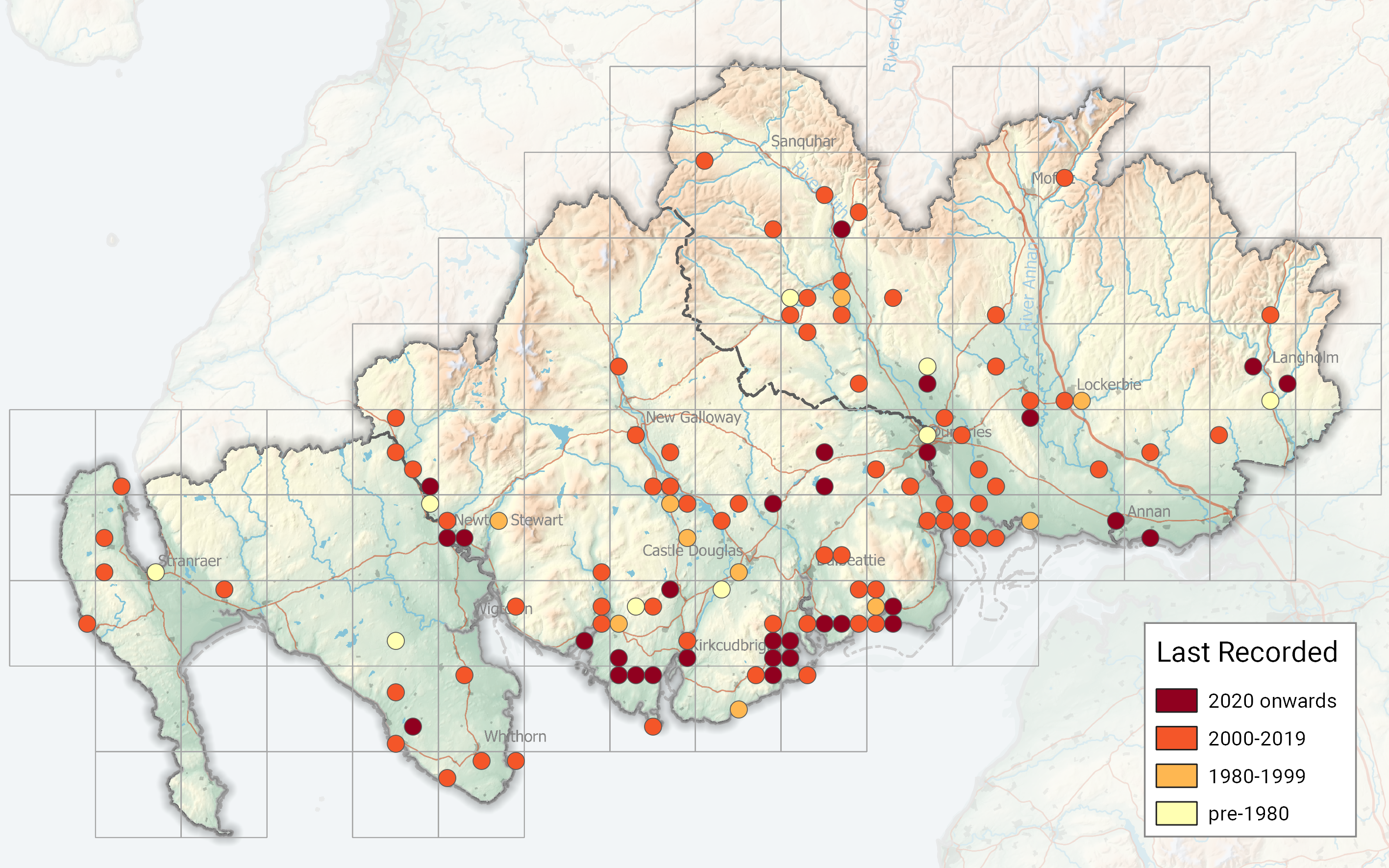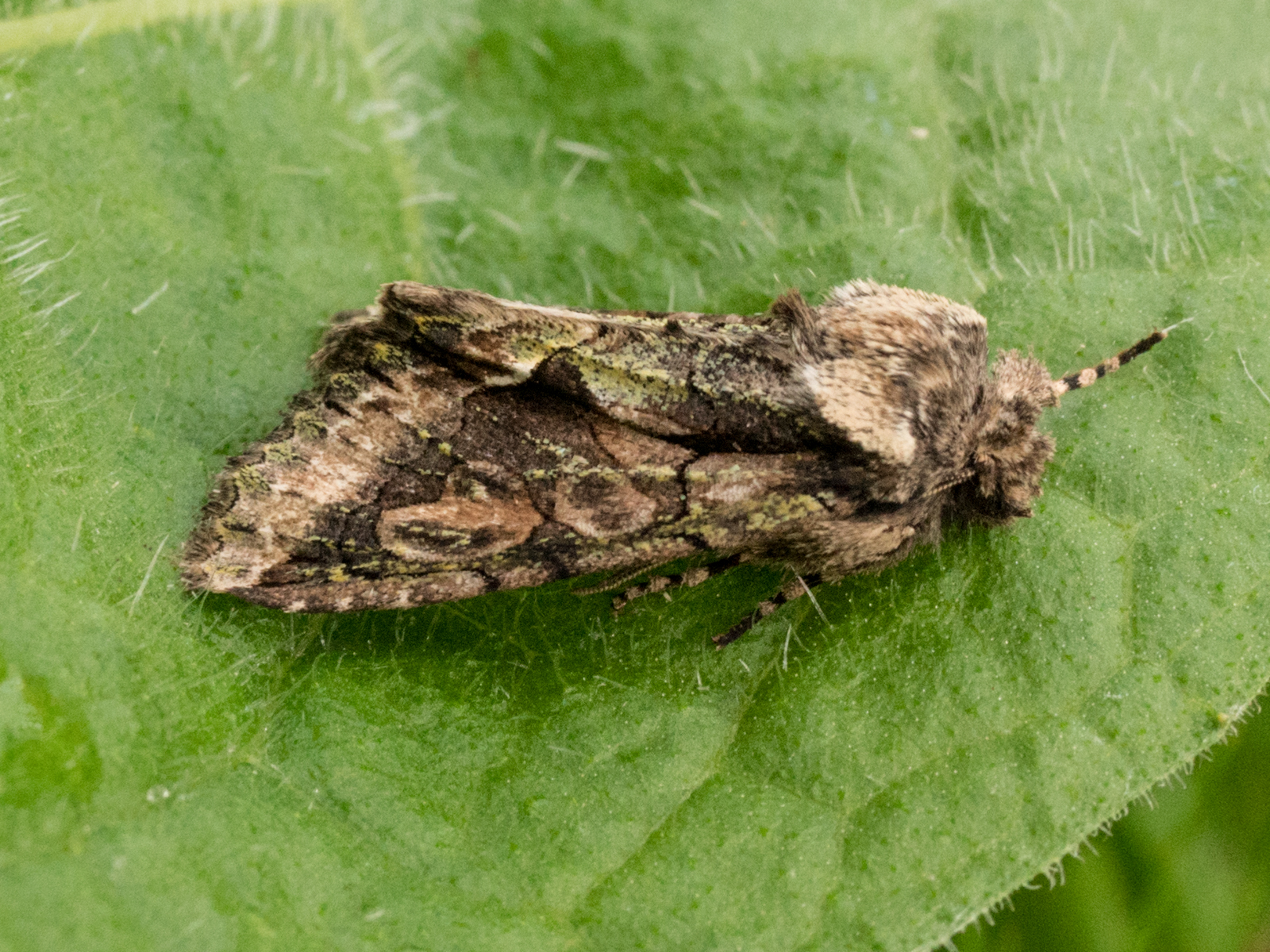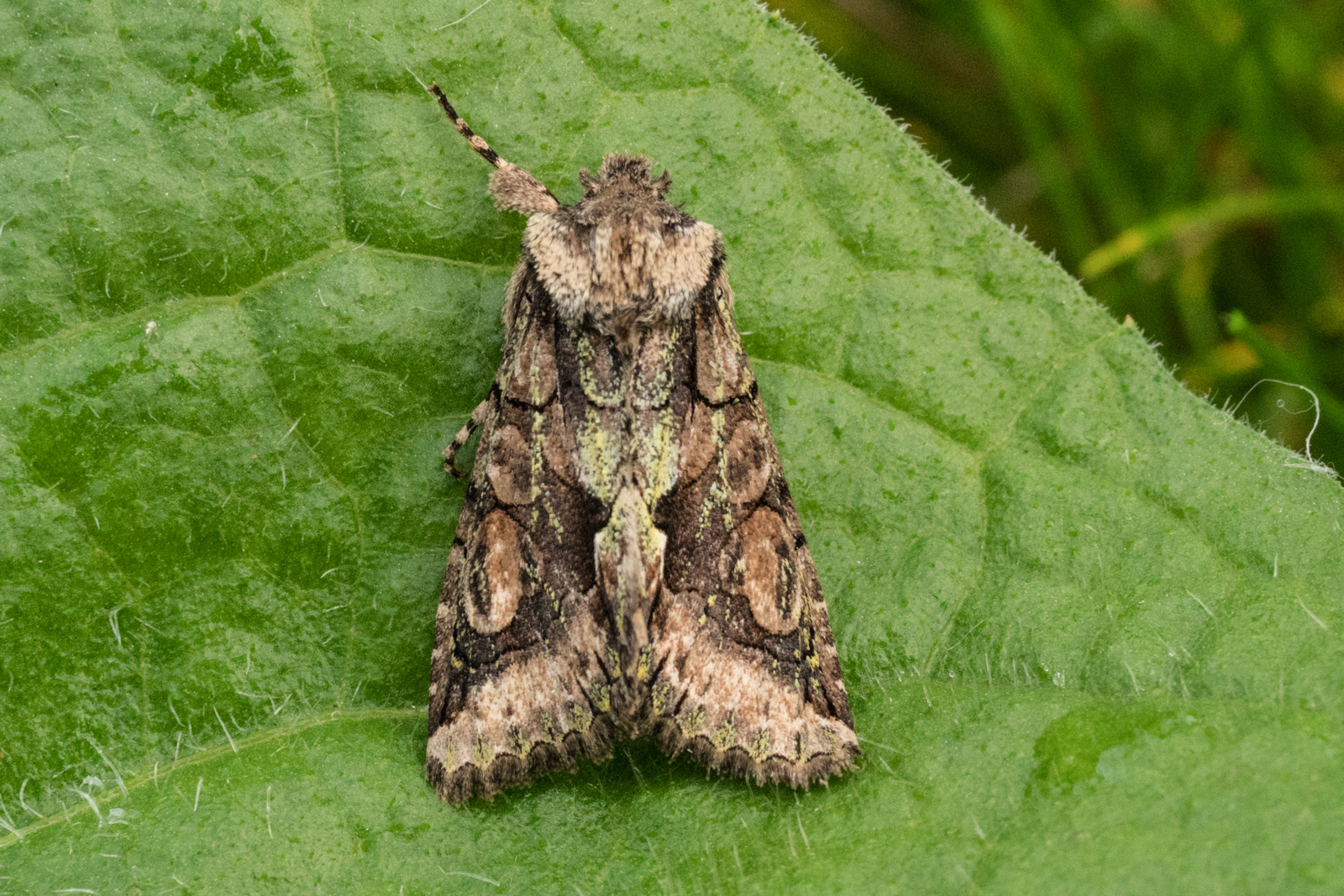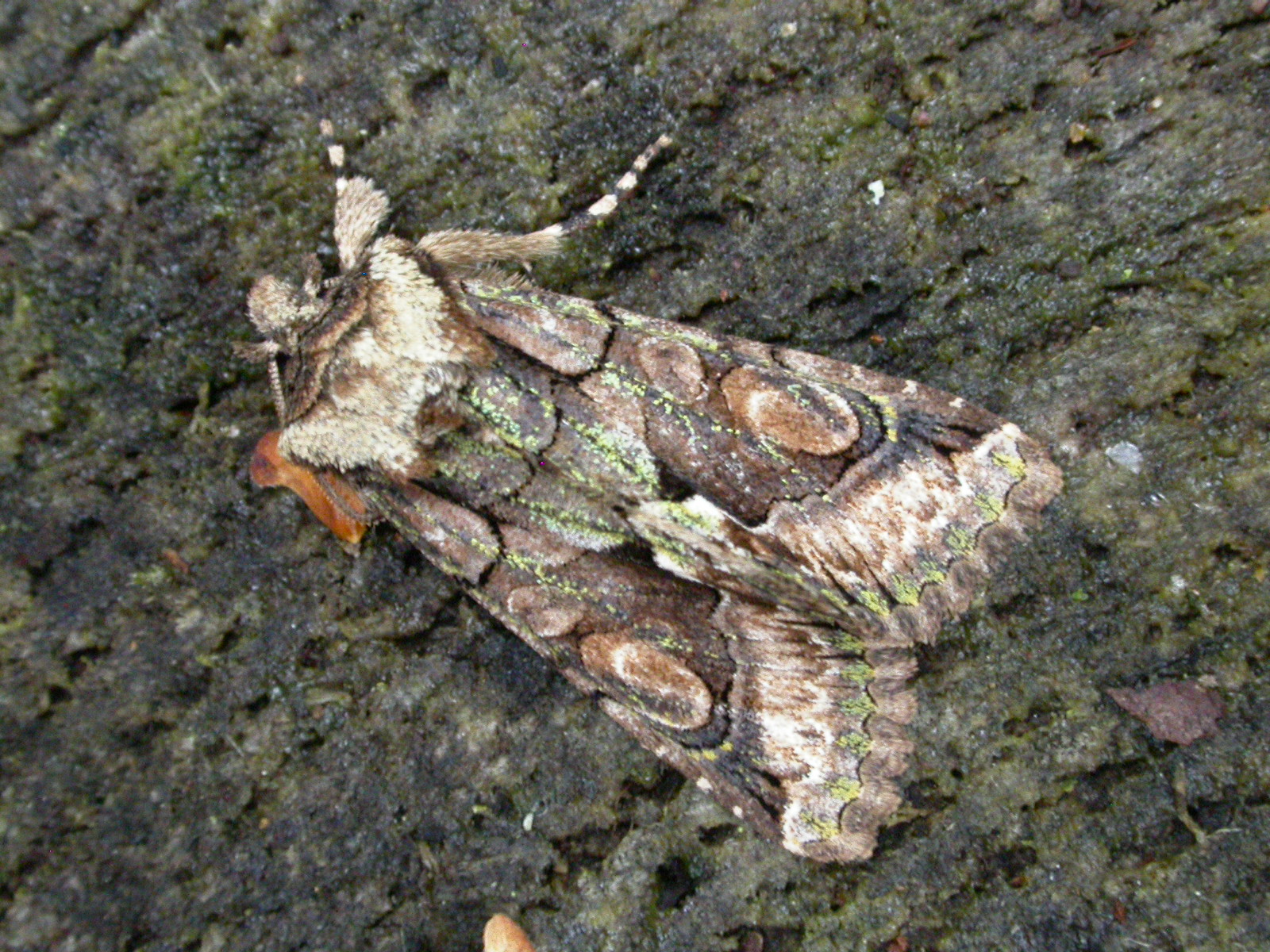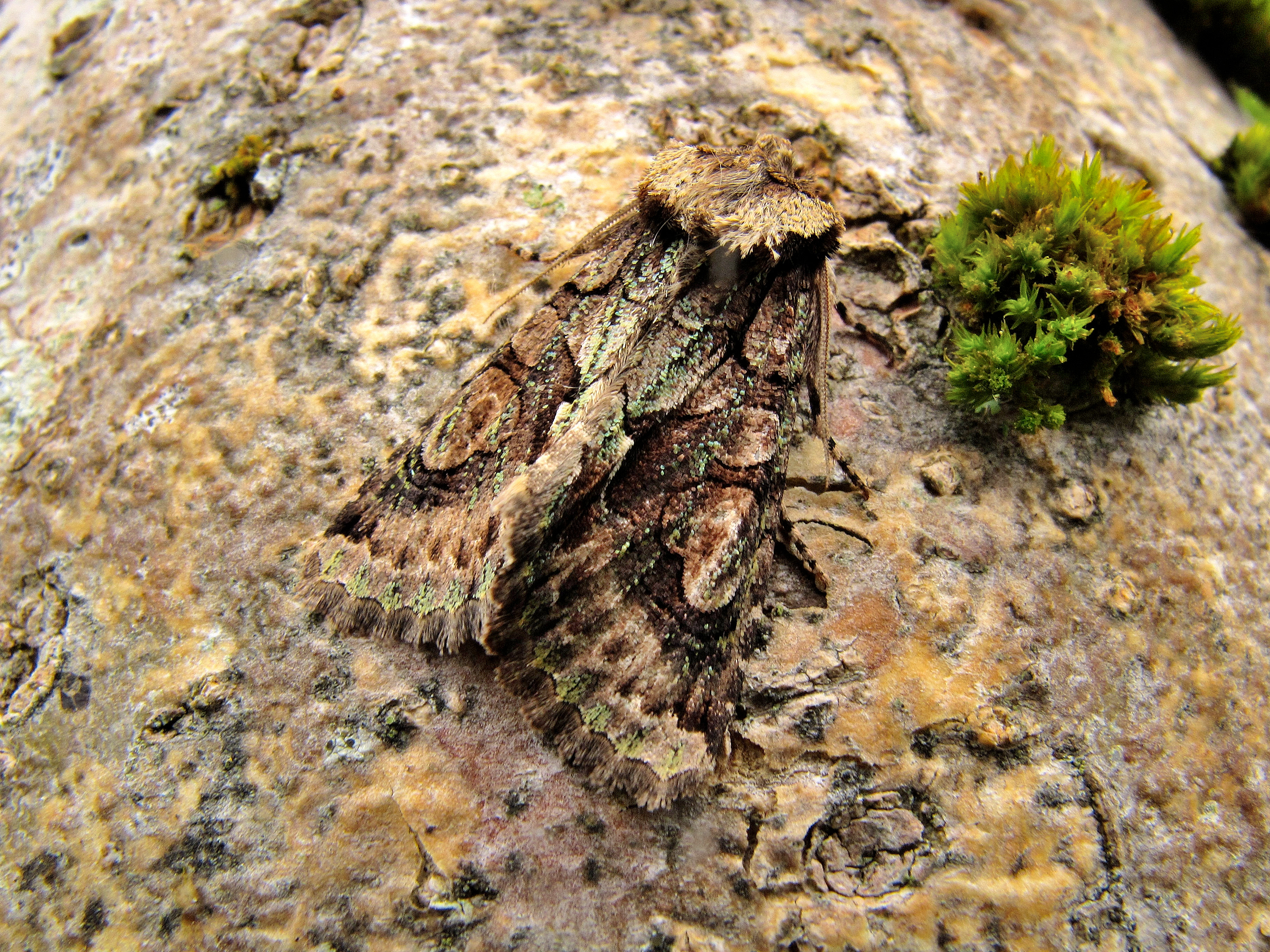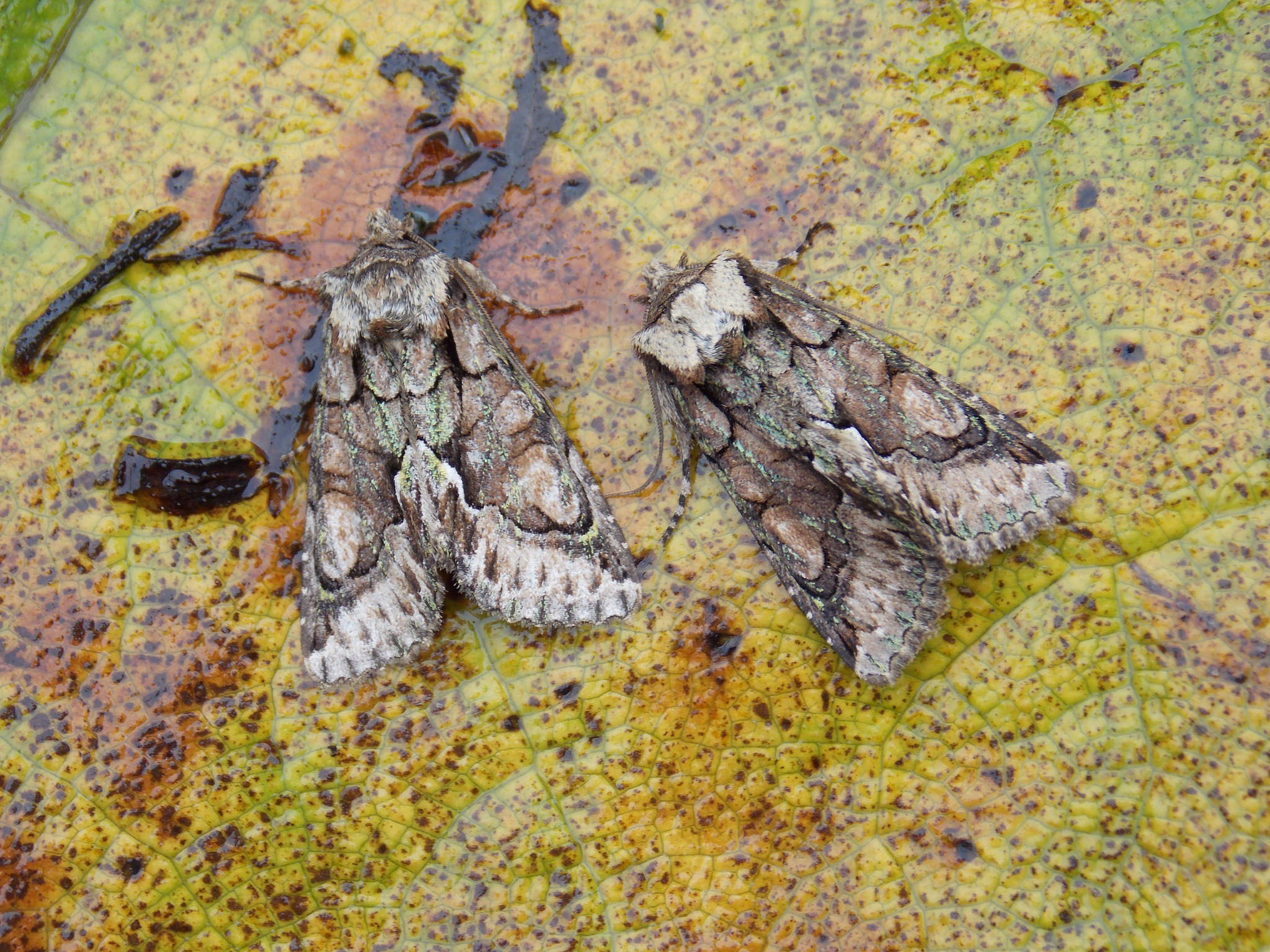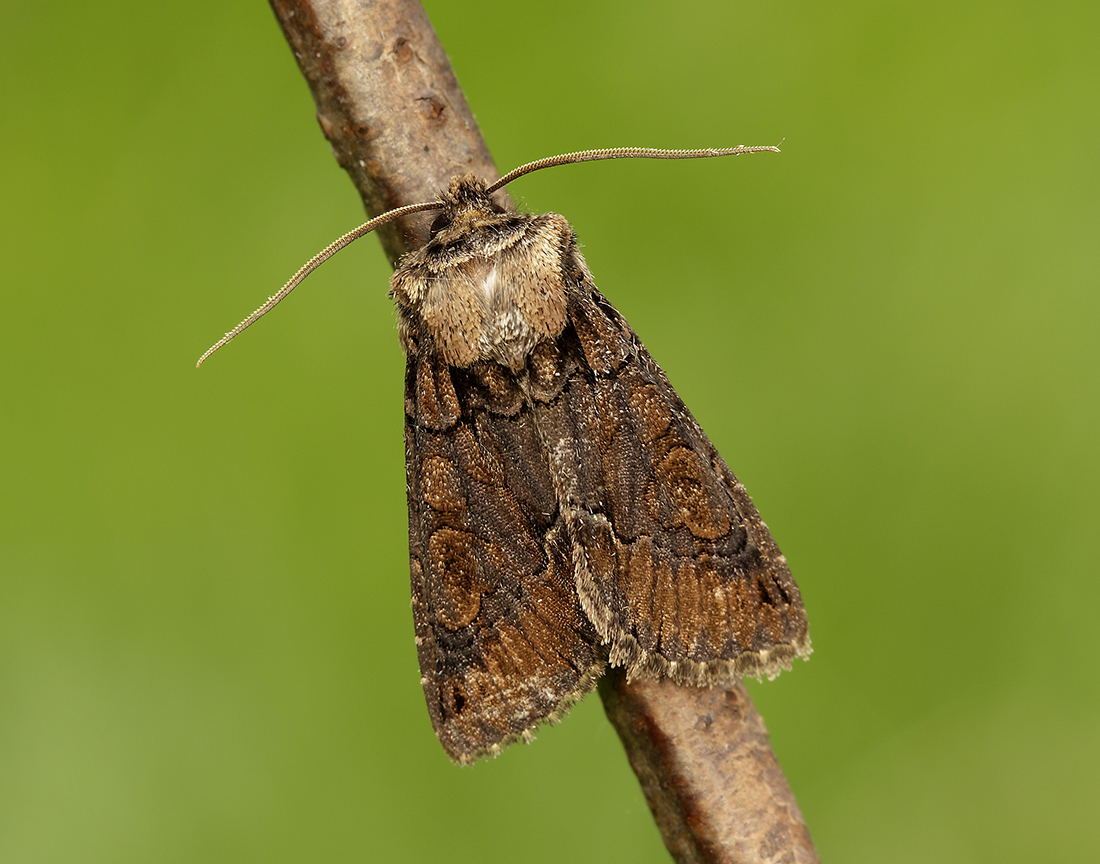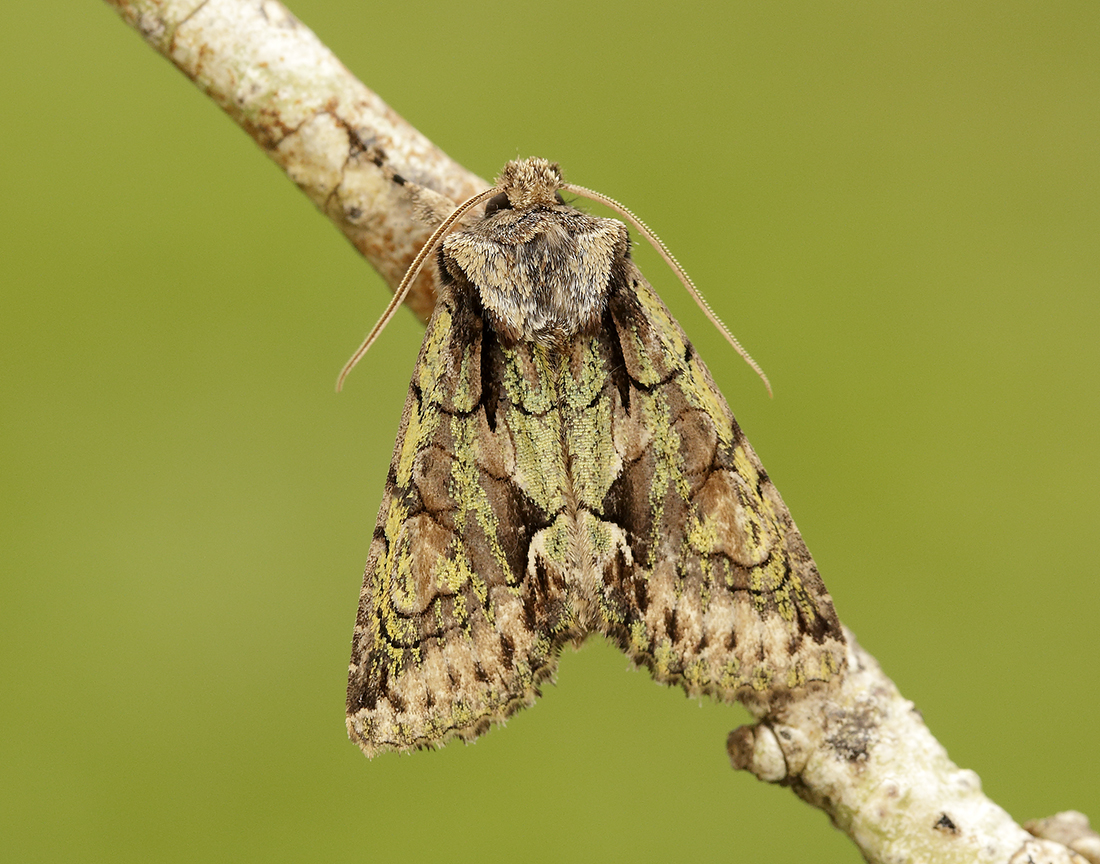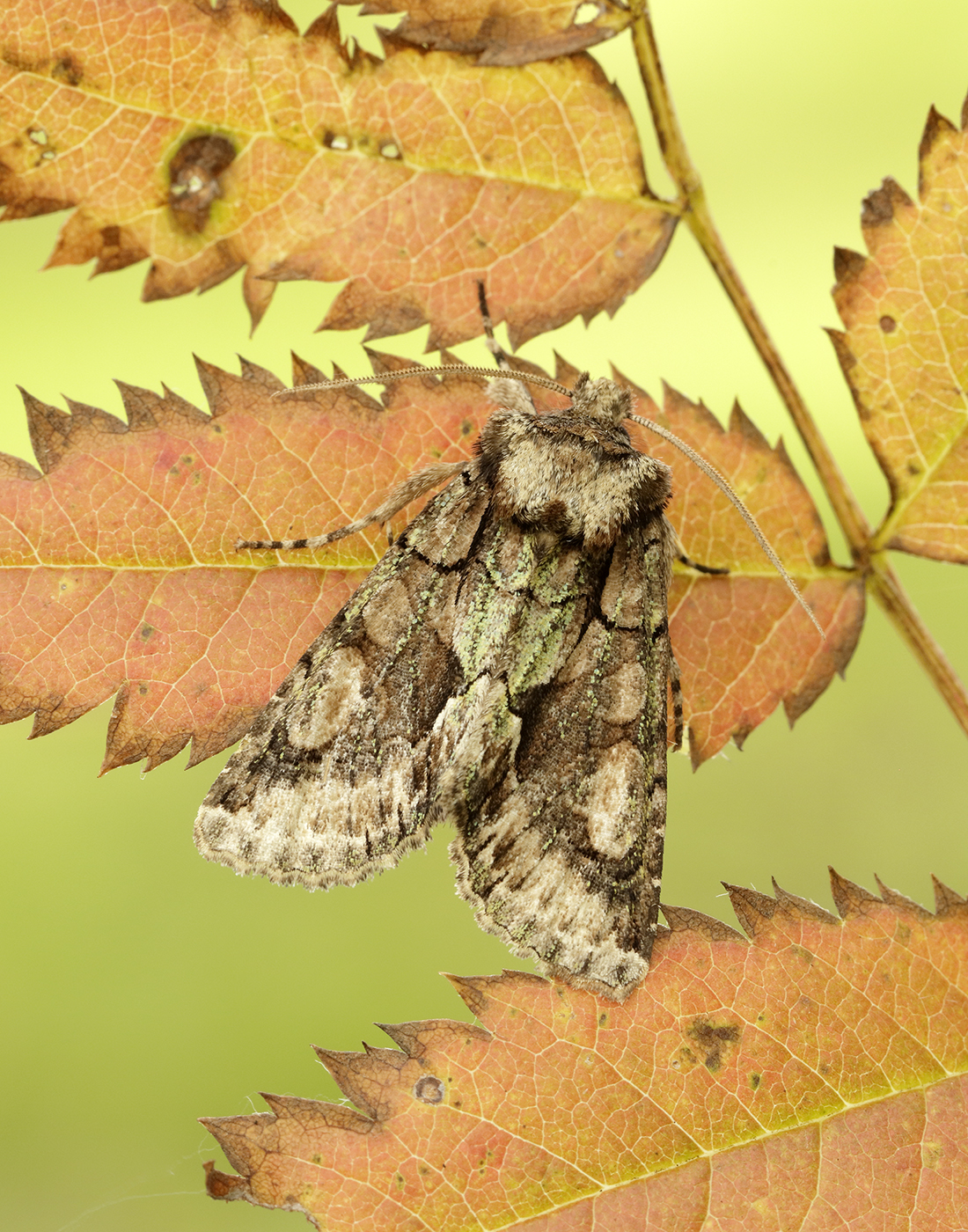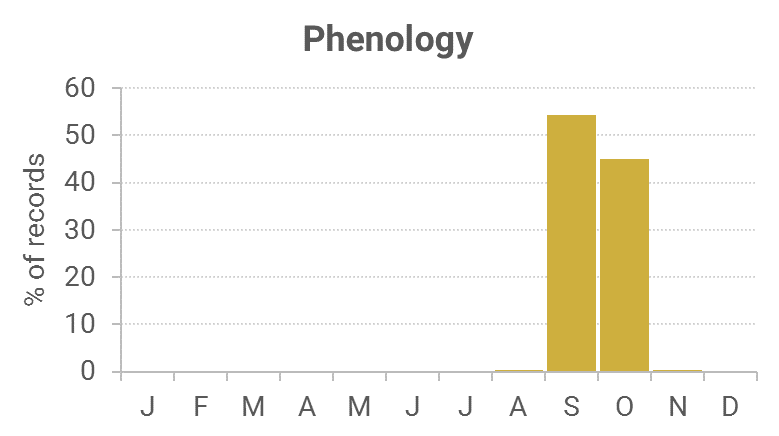Identification
Unmistakable. In f. capucina the forewing is dark brown and lacks the green scales.
Recording Method.
Attracted to light, also comes to sugar. Can be found after dark on ivy flowers and blackberries.
Life cycle
One generation. Overwinters as an egg. Larvae present April to June with pupation several weeks later underground in a cocoon.
Larval Foodplants
Crab Apple, Plum, Blackthorn, Hawthorn, cotoneasters and Rowan.
Habitat
Gardens, scrub, hedgerows and broadleaved woodland.
History
Lennon (1863) had stated it was common everywhere in his ‘List of Lepidoptera taken near Dumfries.’ Gordon (1913) had found it common at sugar at Corsemalzie, Wigtownshire. Earliest date was 17th September 1910. Sir Arthur Duncan (1909-84) during his lifetime had found it at Closeburn, Tynron and Castlehill, Dumfries (all VC72). Archibald Russell (1944) listed it as occurring near Gatehouse of Fleet (VC73) during the years 1942-43.
During 1974-93 the seven Rothamsted stations recorded well over 200 records. From 1992 to 2010 the regular trapped sites at Kirkton and Durisdeer (VC72), Cally Woods, Mersehead RSPB and Old Torr (VC73) and Forest Moor (VC74) contributed most of the 300 records, with a small number of records from a scattering of sites across VCs 72 and 73.

